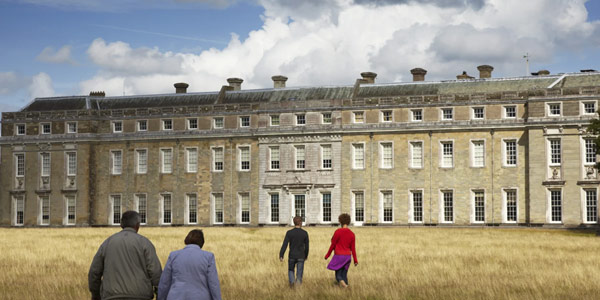
The stately country houses of England have for a large part of our history been associated with the wealth and power of a ruling class. Up until 1822 they controlled access to parliamentary elections, and therefore political power, and the wealth of their owners ensured that they became centres of art and culture and of upper-class networking. By the mid twentieth century these stately homes were perceived as being under threat of destruction as they ceased to be the power bases for an increasingly global economic elite.
The concern that the demise of the country house would lead to the loss of their art collections, architecture and gardens led to deals in which various tax exemptions for owners were exchanged for degrees of public access to the homes and estates of the landed gentry. At the centre of this process was the National Trust, dedicated to preserving country houses and now, itself, one of the largest landowners in the UK. The National Trust came to be perceived as an organisation which sought to preserve not just art and architecture but the way of life of a minority and to portray a national identity stuck in time and representing that of a white elite.
The National Trust is, however, a changing organisation and has more recently been concerned to portray the heritage of a diverse society and in particular to respond to the Black Lives Matter agenda. In its Interim Report on the Connections between Colonialism and Properties now in the Care of the National Trust, Including Links with Historic Slavery the trust provides an introduction to the relationship between the English country house and the darker side of British history. Profits from the slave trade and later from British colonialism provided the money to buy, refurbish and develop the country house and the ownership of the country house helped to convert the owners economic power to political power. The report includes some brief essays to provide the context of Britain’s involvement in the slave trade and in colonialism and a gazetteer of National Trust properties with connections with slavery and colonialism. These give outline histories of, for example Penrhyn castle, build by the profits of Jamaican plantations which also helped to develop North Wales slate quarrying, Claremont in Surrey owned by Clive of India and West Indian slave owners and Hare Hill in Cheshire purchased by the Hibbert family whose money came from slave owning and from most areas of slave trading and who received after the abolition of slavery the modern equivalent of £7 million in compensation.
The National Trust has provided a valuable resource for humanities teachers which will support them in locating local studies of stately homes in a global context and in placing black history at the centre of British history and British heritage.
The Interim Report on the Connections between Colonialism and Properties now in the Care of the National Trust, Including Links with Historic Slavery is available from –
https://www.nationaltrust.org.uk/features/addressing-the-histories-of-slavery-and-colonialism-at-the-national-trust